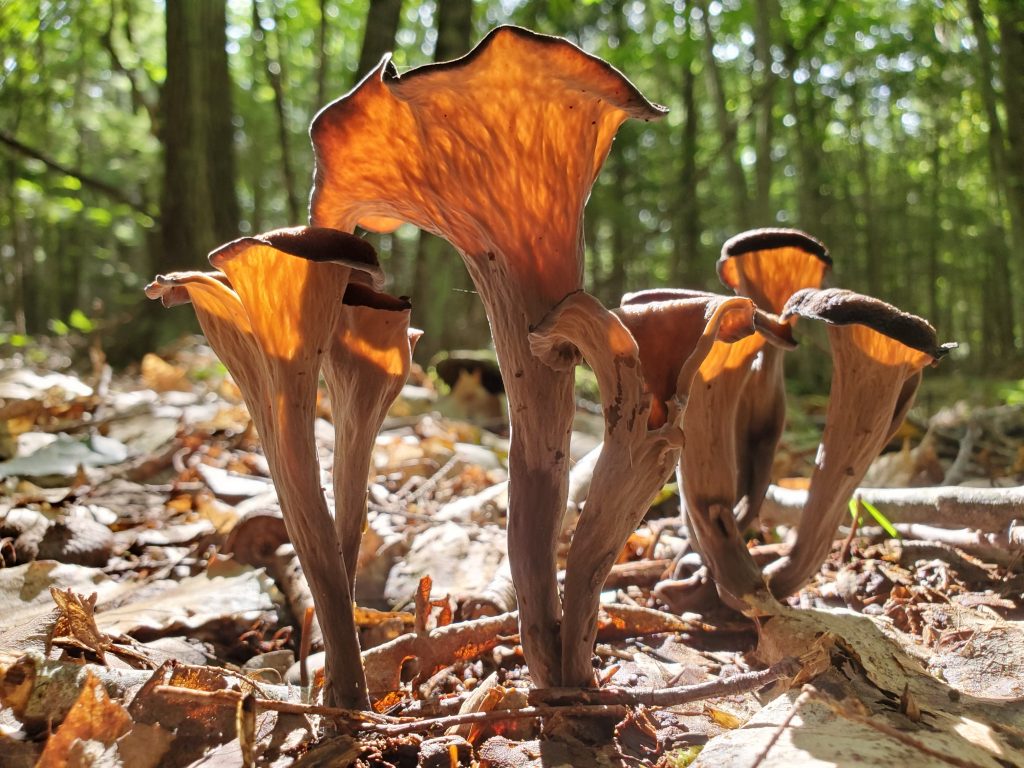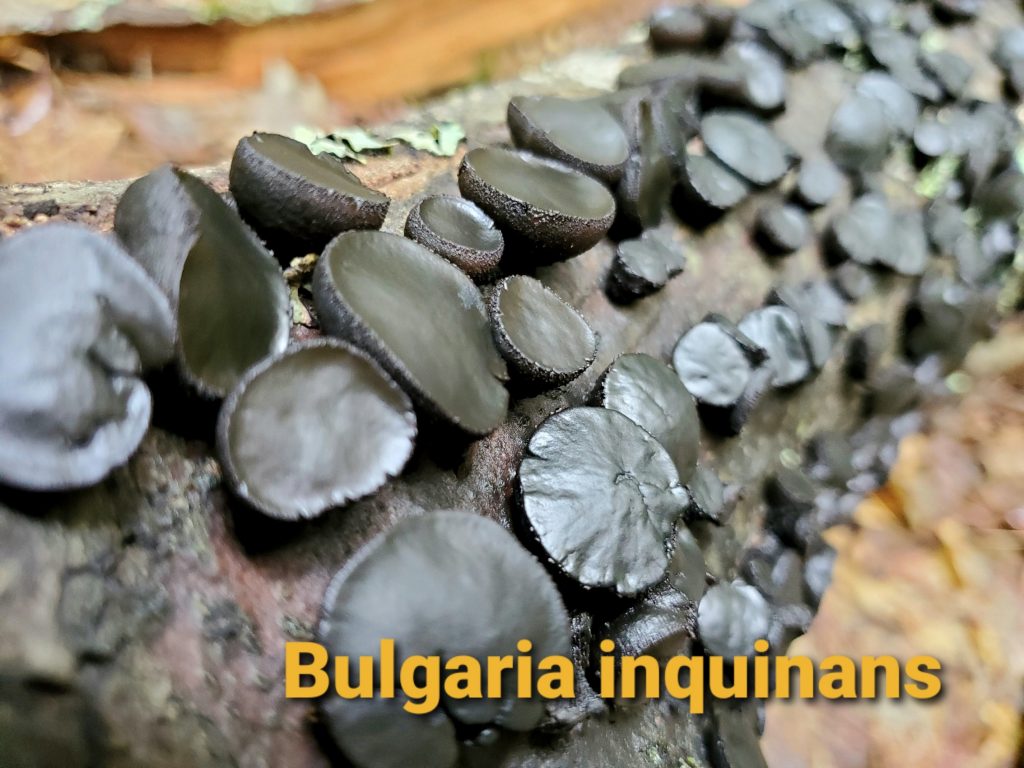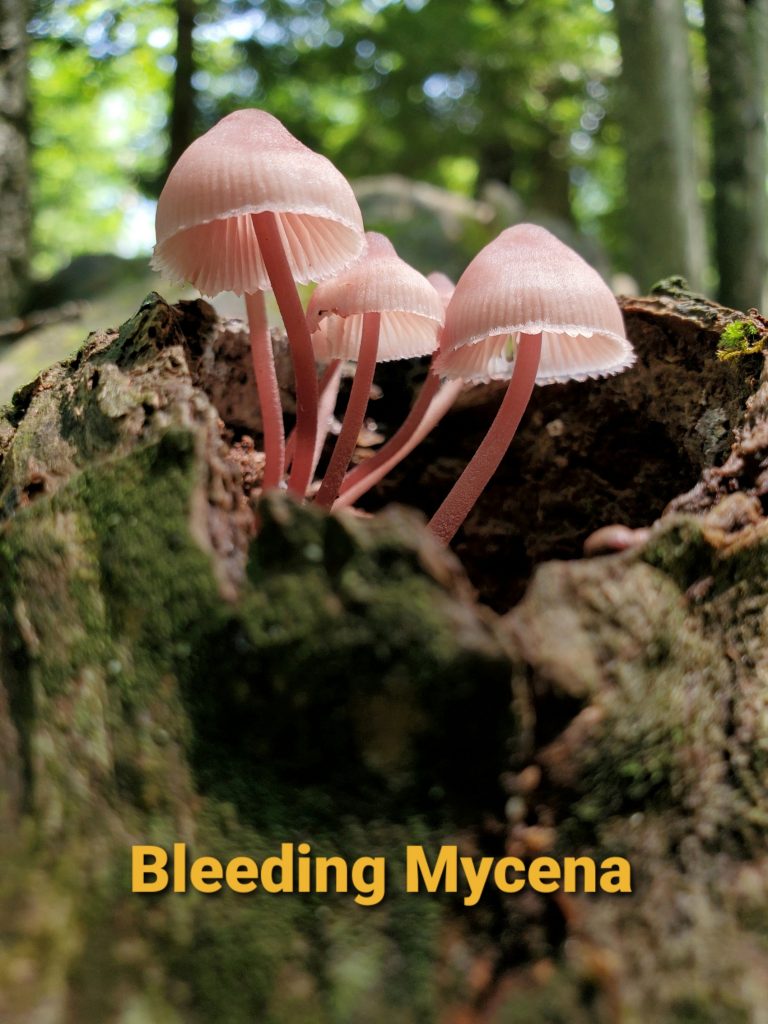|Kevyn Fowler|
After a long hiatus I’m back and very excited about another season of mushrooms, and this summer, after the endless rains of July, is turning out up be a great season. For a while several weeks ago there were mushrooms sprouting in many shapes and sizes, on lawns and on dead logs, in gardens and mulched flower beds, and there’s hundreds of species still blooming and many more yet to come well into late fall.

For me, it’s mostly about photography, so I could barely get very far in an hour or two as I was stopping every few feet to capture another strange and beautiful creature. [Scroll to the end for lots of photos!]
As for the edible varieties, the popular Chanterelle (Cantharellus enelensis), and Black Trumpet (Craterellus fallax) were busting out all over, and still are showing up here and there.
This Black Trumpet season is one for the ages, I’ve picked many pounds and dehydrated them, stored in tightly sealed Mason jars, ready to be added to whatever dish I’m cooking that the Trumpet’s wonderful savory taste will enhance. I’ve also found a Chicken of the Woods, Laetiporous cincinnatus, which is pretty tasty prepared in a variety of recipes. They aren’t one of my all-time favorites but a nice change of flavor and texture from the Chanterelles and Black Trumpets. Chanterelles are very good, I like them sautéed alone in butter, or sautéed and added to an omelet or scrambled eggs.
If you are interested in learning what’s happening here in Maine currently, you might consider joining a Facebook mushroom page. There’s a number of them out there, “Maine Mushrooms”, “Northern Mushrooms” are two great pages with lots of things folks are finding and some very knowledgeable people commenting and helping out beginners and even
other experts learn.
There are several books out there that are good to have. If you’re looking for lots of species and good photos of them, the National Audubon Field Guide to Mushrooms is a great source, though information on edibility can be somewhat dated, and the scientific names may have changed for some species. The sheer number of species and photos make this a fun book to have on hand, especially in winter.
Another great book is David Spahr’s “Edible and Medicinal Mushrooms of New England and Eastern Canada”. With lots of great photos and descriptions of a number of species that are commonly found in our area, along with methods of cooking and preparing, this is an important book for beginners and for those looking to expand from the basics.
For me, a lot of what makes me happy is walking through the woods and just looking for interesting things to photograph, not just the mushrooms. Sometimes it’s how a tree has grown oddly, or an interesting pile of rocks with an unknown story behind it, anything that catches my eye and curiosity. Learning the names of the trees and plants and rocks and mushrooms is a bit of an obsession, I like the challenge and the learning and satisfying my endless curiosity about the natural world. Studying and finding out which mushrooms are edible was a natural progression, and while I’m not a “bucket list” forager who eats anything that’s safe to consume, I have about a dozen species I really like and bring home to eat when I find them.
However you like to enjoy the pastime, whether for foraging or photography or to simply enjoy their beauty, mushrooms will provide you with a lifetime of learning and exploration and fun.
(Disclaimer: You should never, ever eat any mushrooms unless you are 150 percent certain you know you have the right species. The old adage, “when in doubt throw it out” has likely saved many a novice forager’s life, and potentially hours of misery in the bathroom. Also the author and NGXchange assume no responsibility or risk arising from the information in this article )
The following photos are by Kevyn Fowler, all rights reserved.








































